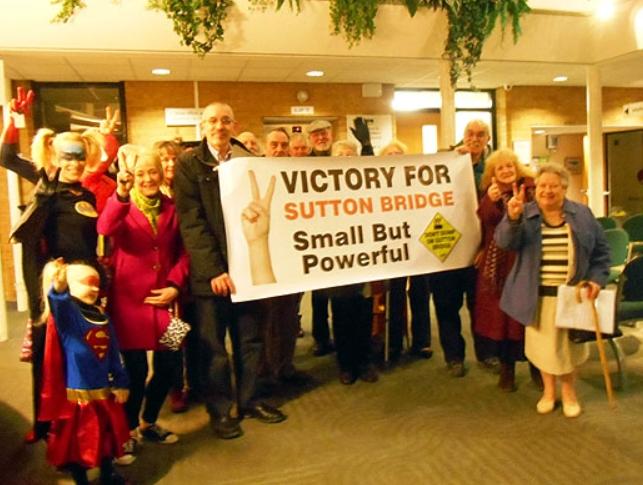SUTTON BRIDGE INCINERATOR
As residents of Sutton Bridge and surrounding areas are now aware, the SHDC Planning Department refused the planning application by ESPB, overturning an earlier decision to approve it.
The original plan was scuppered by a Judicial Review which stated that the judgement was unlawful on the grounds of sustainability of feedstock. This was after months of careful delving into documents by various local people, and others, who were very concerned about this development and the other planned one, – a second gas-fired power station – on the same site.
The main issues were: the effect of cumulative emissions on the local and wider populations and the biodiversity of The Wash – an European Marine Site and SAC; the building of such developments in a high-risk flood area; the possibility of run-off into local drainage systems, including the river Nene; the increase in traffic movements during a 16-hour day over a 7 day period.
Neither development would have produced significant jobs for local people. Construction companies usually bring their own workforce with them.
At the Priory Road Planning Meeting in Spalding, on 18th March, there was a unanimous vote in favour of the Planning Officers’ recommendation that permission for the building of the incinerator be refused on the grounds that the Developer (once known as PREL) had not answered penetrating questions to support their reapplication. In fact PREL had not even had the good grace to reply to anything since August 2014. One might feel that they were simply opportunistic amateurs, and had been so from the very start, back in November 2009.
The vote was formally proposed by Cllr Brewis, but one should not be under any illusion that this means that he has ever given a moment of support for the campaign.
In May 2009 he is on record as having said that he thought the incinerator was a ‘good idea’; in 2012 he was thanked by the PREL’s publicity representative for helping to deliver their leaflets round the village; when the incinerator was considered at the initial SHDC Planning Committee meeting he ‘betrayed the village’ by not speaking out against it—his only comment was that we ought to be provided with reassurance that no foreign bugs came into the country with imported wood feedstock; he was scathing about the demonstration through the village against the incinerator.
The Finance Committee of the Parish Council failed to support a Judicial Review on the grounds that it would be bankrupted if it did and anti-incinerator posters were removed from the village streets.
Politicians find it convenient that their electors have very short memories. It might be worth refreshing our minds about the history of this.
A number of campaigners have spent a great deal of time and energy researching the ramifications of the proposed development, writing letters and articles, designing and distributing leaflets and posters, and developing a case for the developers to answer.
SHDC Planning Committee Chairman Roger Gambba-Jones was a good deal less than respectful towards the objectors’ case originally, asserting that they had to be clear that the Planning Committee was simply giving permission for a building – nothing else constituted a ‘material consideration’ – neither traffic problems nor sustainability of feedstock supply nor the danger of explosions in feedstock storage. The Planning committee were simply giving permission for a building.
As things turned out, an individual Parish Councillor offered to finance a Judicial Review process and, faced with the Courts, realising that they were on flimsy ground, SHDC caved in before things could get to that stage.
After the case was overturned by the Courts the Planning Officers asked the questions of the developers that they should have asked in the first place, which would have saved the taxpayer a lot of money. The questions they finally asked were based on the results of campaigners’ research.
The item ‘EPSB’ was despatched fairly quickly at the 18th March Planning committee Meeting. One had the feeling that the Chairman expected some applause from the few of those people who attended the meeting. It was not forthcoming. The overturning of the proposal was not based on anything rational; the Committee failed to acknowledge the efforts of the Campaigners.
Now there is matter of the second Power Station which it is proposed to build on a green field site on the other side of the unmonitored existing power station.
This development proposal is currently awaiting a decision by the Secretary of State. It is to be hoped that a last minute pre-election decision in favour is not given at the eleventh hour.
